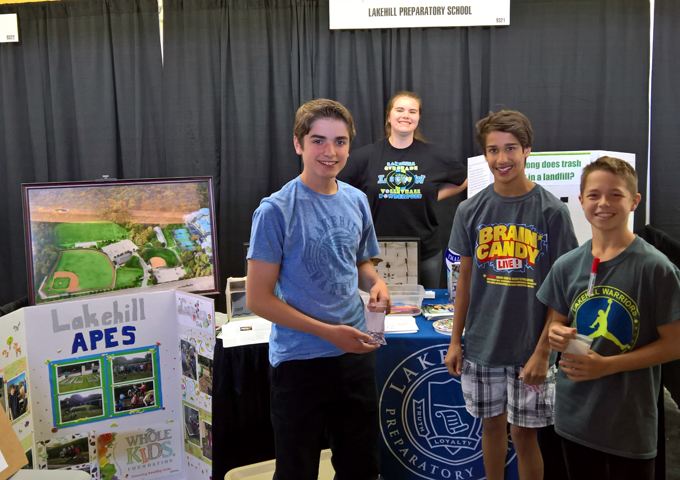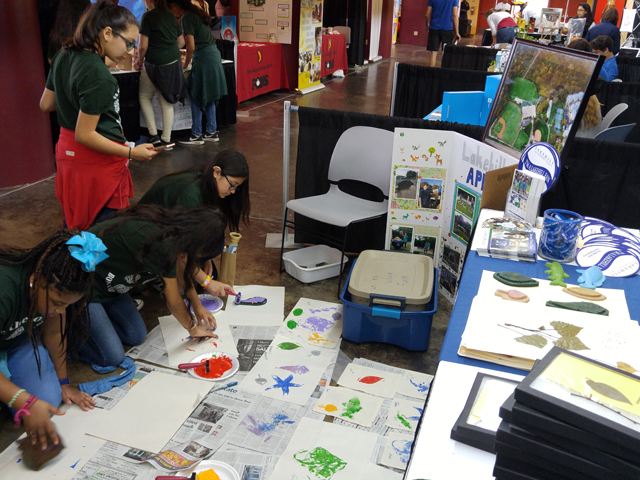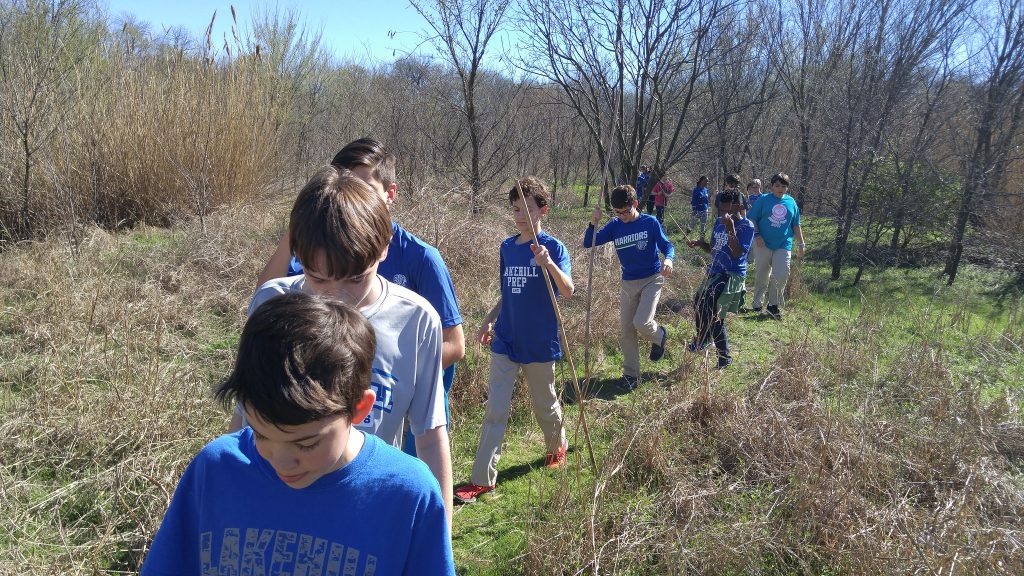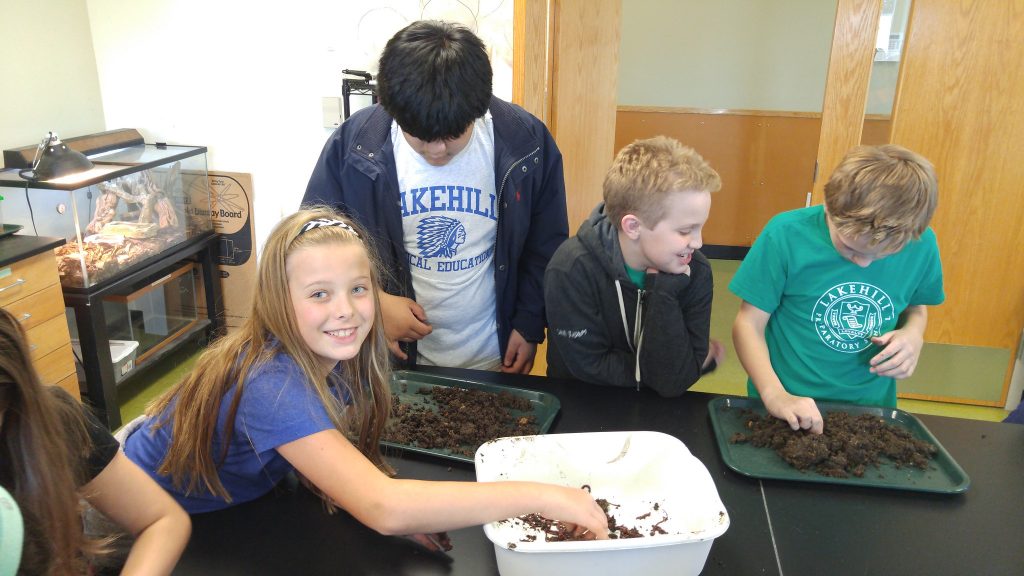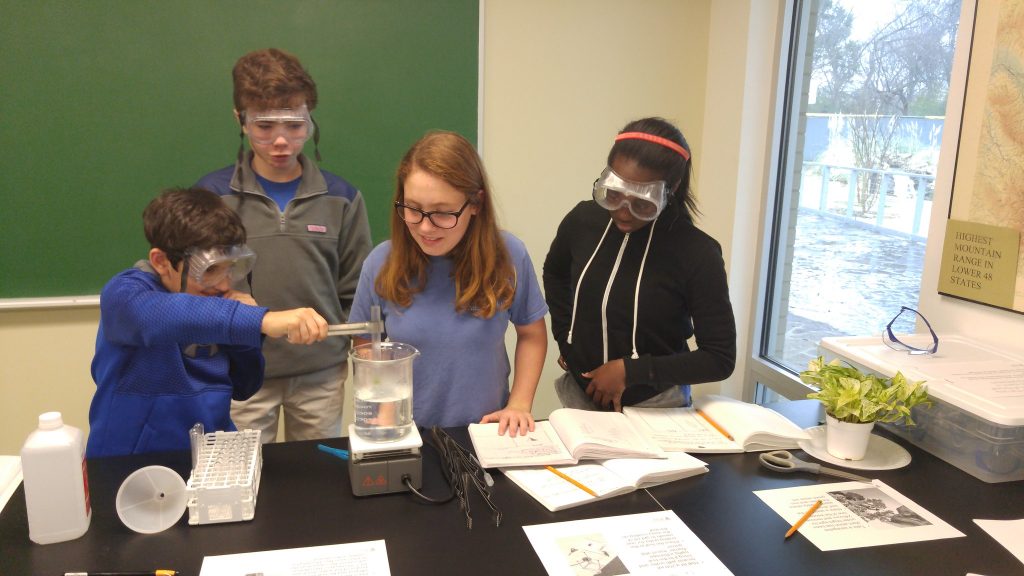The 2017 Earth Day Texas was the planet’s largest Earth Day Expo ever. The 130,000 visitors who attended the event, held April 21-23 at Fair Park, were treated to more than 250 speakers and 700 interactive exhibits showcasing leaders in the corporate, academic, and non-profit worlds, including a booth featuring Lakehill Preparatory School.
Earth Day Texas strives to increase environmental awareness through education. Thousands of educators and students from more than 100 schools attended the three-day event.
Students in Jeremy Holman’s AP Environmental Science class showcased a variety of environmentally friendly projects. Their exhibits included art works made from paper waste, an experiment on how plants help reduce soil erosion, and an activity to learn what types of materials can and cannot be recycled.
Lakehill’s Director of Environmental Education, Daniel Bracken, helped visitors paint silicone fish and leaves that they rolled paint onto and used to create colorful prints. “Many visitors were also interested in the types of classes that are held at the ESC,” Bracken said. “I showed off the student created herbarium and insect collections that were created by second and third grade students.”
Bryna Thomson’s Middle School student volunteers in fifth and eighth grade showed visitors the ESC’s worm compost bin and taught them about the benefits of worm composting. They also engaged visitors in a fun matching game to teach about the amount of time it takes different materials to break down in a landfill.
“Visitors especially appreciated the worm farm,” said Head of Lower School John Trout. “The courageous held the wriggling creatures in their hands as they learned why farmers love to have worms in their gardens while the timid cringed from afar.”
Earth Day Texas is an annual festival seeking to elevate environmental awareness and change the way North Texans think, live, and work. This is the sixth year that Lakehill has been featured.
